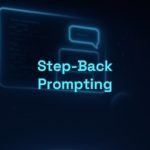Persona-Based Prompting: Personalize Responses with Specific Roles

Want the AI to respond like an expert or with a unique tone? The Persona-Based Prompting technique allows this by instructing the AI to “act as” a specific role, like a historian or a marketing writer, for responses that better fit your needs. It’s ideal for tasks that require specialized perspectives or personalized styles.
If you use AI daily to learn, create, or solve problems, mastering Persona-Based Prompting will open up a world of possibilities.
This article was created to help end users understand, adapt, and apply the Persona-Based Prompting technique intentionally and explicitly in their daily use of AI. For more practical examples, also check out our article Master the “Act As An Expert” Technique in AI Prompts, featuring advanced examples and over 470 persona ideas!
Table of Contents
What Is the Persona-Based Prompting Technique?
Persona-Based Prompting is a prompt engineering technique that guides the AI to respond as if it were a specific persona—such as a professional, expert, or character. By using commands like “Act as a historian” or “Take on the role of a creative copywriter,” you shape the tone, style, and content of the response to suit a specific context or goal. For instance, asking a “journalist” to analyze a topic will result in a more investigative tone than asking a “student.” This approach personalizes responses and simulates expertise, making it ideal for users of all levels.
The benefits include more relevant, task-adapted responses and greater control over the outcome. It’s like consulting a tailored expert, making the technique both accessible and powerful.
Origin of Persona-Based Prompting
While there is no single formal study defining Persona-Based Prompting, the technique evolved alongside advancements in language models—especially after 2020—when researchers and users began exploring contextual prompts to personalize responses. It’s now a widely adopted practice in prompt engineering to simulate specific roles.
How Does It Work?
Persona-Based Prompting is simple but requires clear instructions to define the persona and the task. Follow these steps:
- Choose the persona: Decide who the AI should be (e.g., “a historian,” “a marketing copywriter”).
- Define the task: Describe what the persona should do (e.g., “explain a concept” or “create an ad”).
- Include context: Specify the audience or goal (e.g., “for beginners” or “for a campaign”).
- Specify the format: Request paragraphs, lists, or another format to organize the response.
You can use variations like “Act as,” “Pretend you are,” “Take on the role of,” or “Personify” to instruct the AI. For example, “Act as an expert in X” or “Pretend you are a teacher” will generate personalized responses. Clear prompts ensure aligned results.
When to Use It?
Persona-Based Prompting is ideal for situations that require customized responses or specific styles. Use it when you want:
- To adapt the response style: According to the target audience or context.
- To simulate specific roles: Such as consultants, teachers, mentors, or creative characters.
- To explore different perspectives: For example, asking for advice as if from a “psychologist” or “startup expert.”
Practical Examples of Persona-Based Prompting in Action
See how to apply Persona-Based Prompting in real-world scenarios with prompts you can adapt.
Example 1: Teacher for Children
Context: You want a didactic explanation about the solar system.
Act as a science teacher for 8-year-old children. Explain what the solar system is in a fun and simple way.Expected result example:
A playful explanation with simple comparisons suitable for a young audience.
Why it works:
The persona guides the language level and explanation style.
Example 2: Explaining Artificial Intelligence as a Historian
Context: You’re a student who needs a clear explanation of artificial intelligence (AI) for a school paper.
Act as a historian expert. Explain what artificial intelligence is, highlighting its historical evolution, for high school students. Use clear paragraphs.Expected result example:
As a historian, I see artificial intelligence (AI) as the ability of machines to simulate human abilities such as learning and problem-solving. Its history begins in the 1950s when Alan Turing proposed that machines could “think.” In 1956, the term “artificial intelligence” was coined at the Dartmouth conference. In the following decades, AI evolved with advances in computing, such as neural networks in the 1980s and deep learning in the 2010s, powered by large data volumes and powerful processors. Today, AI is present in virtual assistants, self-driving cars, and more, transforming society.
Why it works:
The historian persona offers a contextual explanation with an academic tone and historical focus—ideal for students. The clear prompt produces an accessible answer for beginners, while the historical details engage intermediate and advanced readers.
Start Using Persona-Based Prompting Now
Persona-Based Prompting — also known as the “Act As” technique — is a simple yet powerful way to customize AI responses, tailoring them to specific roles and contexts. Whether for expert analysis or creative writing, it helps you get more relevant results. To explore more personas and examples, see the article Master the “Act As An Expert” Technique in AI Prompts.
Benefits of the technique:
- Customized responses with tailored tone and style.
- Specialized perspectives for technical or creative tasks.
- Easy to use for beginners and versatile for advanced users.
🎯 In summary
🧠 Technique: Persona-Based Prompting
💡 Ideal for: Expert perspectives, personalized styles, adapted responses
✅ Helps you: Get contextual, relevant answers using specific roles
Extra Tip
Test multiple personas for the same task and compare results. For example, ask both a “teacher” and a “journalist” to explain a concept. This reveals different perspectives and helps you choose the best tone for your needs.
Advanced Variations
Combine Persona-Based with Few-Shot Prompting for greater precision. Provide example responses in the style of the chosen persona (e.g., “Act as a historian and follow these examples”) to align tone and content—ideal for technical or creative writing.
🔗 Want to explore more techniques like this?
Check out the Practical Guide to Prompt Techniques, Frameworks, and Formulas for LLMs.



